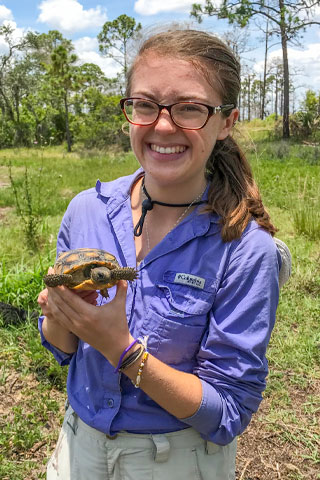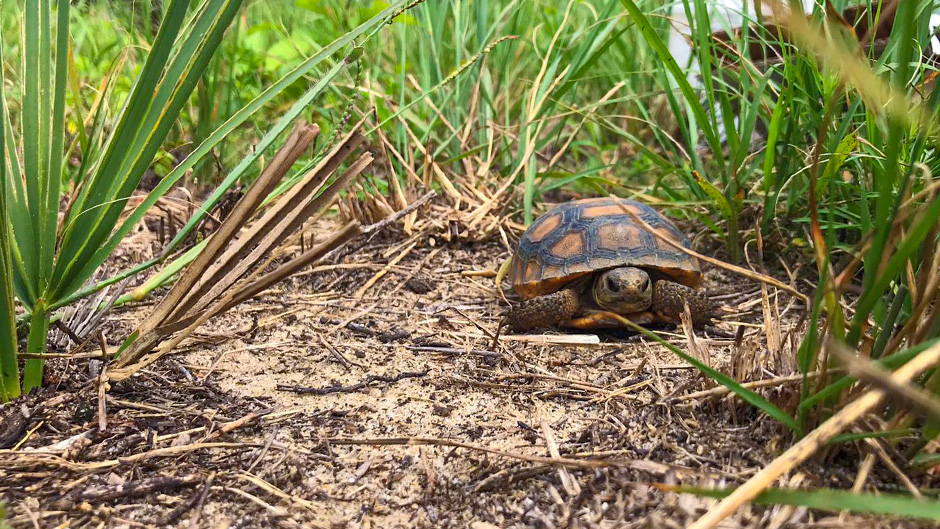Gopher tortoises are a critical part of the Florida landscape.
Native to the southeastern United States, they support more than 300 other organisms by building large underground burrows that protect their species, along with frogs, snakes, and other invertebrates from predators, as well as the heat.
But gopher tortoises are also threatened. In the past century, their population has declined by 80 percent—likely because development is causing their habitats to shrink. And these communities are spread farther apart, which makes it harder for them to reproduce.

Yet, because the tortoises are such an important component of dry, pine savanna ecosystems, University of Miami graduate biology student Leyna Stemle wants to learn as much as she can about juvenile gopher tortoises, so conservation managers have more insight when hoping to protect the species.
“There’s a lot of information on gopher tortoises because they are so widespread, but there’s not a lot of information on younger ones. So, I wanted to fill in some of the knowledge gaps,” Stemle said. “Part of conservation is understanding the species, and we learned there are big differences in how they act as opposed to the adult tortoises.”
In a study published recently, Stemle and her advisor, biology associate professor Christopher Searcy, scrutinized a small group of young gopher tortoises in central Florida using GPS trackers. It was the first time the technology has been used to document the whereabouts of young gopher tortoises—who are very secretive—and it also helped them discover that these reptiles are leaving their burrows twice as often as scientists previously recorded. They also learned that immature gopher tortoises are utilizing six times more space than scientists once believed.
“Tortoises were moving an average of 75 feet away from their burrows each day, whereas previously we thought these young tortoises moved an average of only 26 feet each day,” Stemle said.
Knowing that they leave their burrows almost four times a day to eat, stay out of the burrows longer, and travel farther each day means that preserving the species might mean conserving larger areas of land for the tortoises to thrive, Stemle added.
There is little known about these reptiles younger than the age of seven. In the past, they were too small to track and are still hard to find because they sense movement and hide in their burrows, according to Searcy. Knowing this, the team also placed cameras outside the young tortoises’ burrows. This allowed the researchers to see them interacting with other juveniles, as well as defending their burrows from larger adults.

“We also found that they are more social than previously thought, so we were likely underestimating the young tortoise’s role in populations,” Stemle said. “Maybe they have a more complex social life than we currently understand,” Searcy remarked.
For the study, Stemle and Searcy collaborated with Betsie Rothermel, a scientist at the Archbold Biological Station just north of Lake Okeechobee. The station is in a preserve with facilities for research on gopher tortoises and many other plants and animals native to Florida. Using burrow maps created by Archbold scientists, the team attached GPS tags to 10 gopher tortoises between the ages of 3 and 7 years old (they can live to 60 years old in the wild) and tracked them for about 40 days.
While the current GPS trackers only allowed them to follow the tortoises for a short time, Rothermel, Searcy, Stemle, and another biology graduate student, Hunter Howell, are continuing to study the species. They are currently following a larger group of close to 30 youngsters using radio trackers to learn about the ideal habitats for these burrow-dwelling reptiles.

